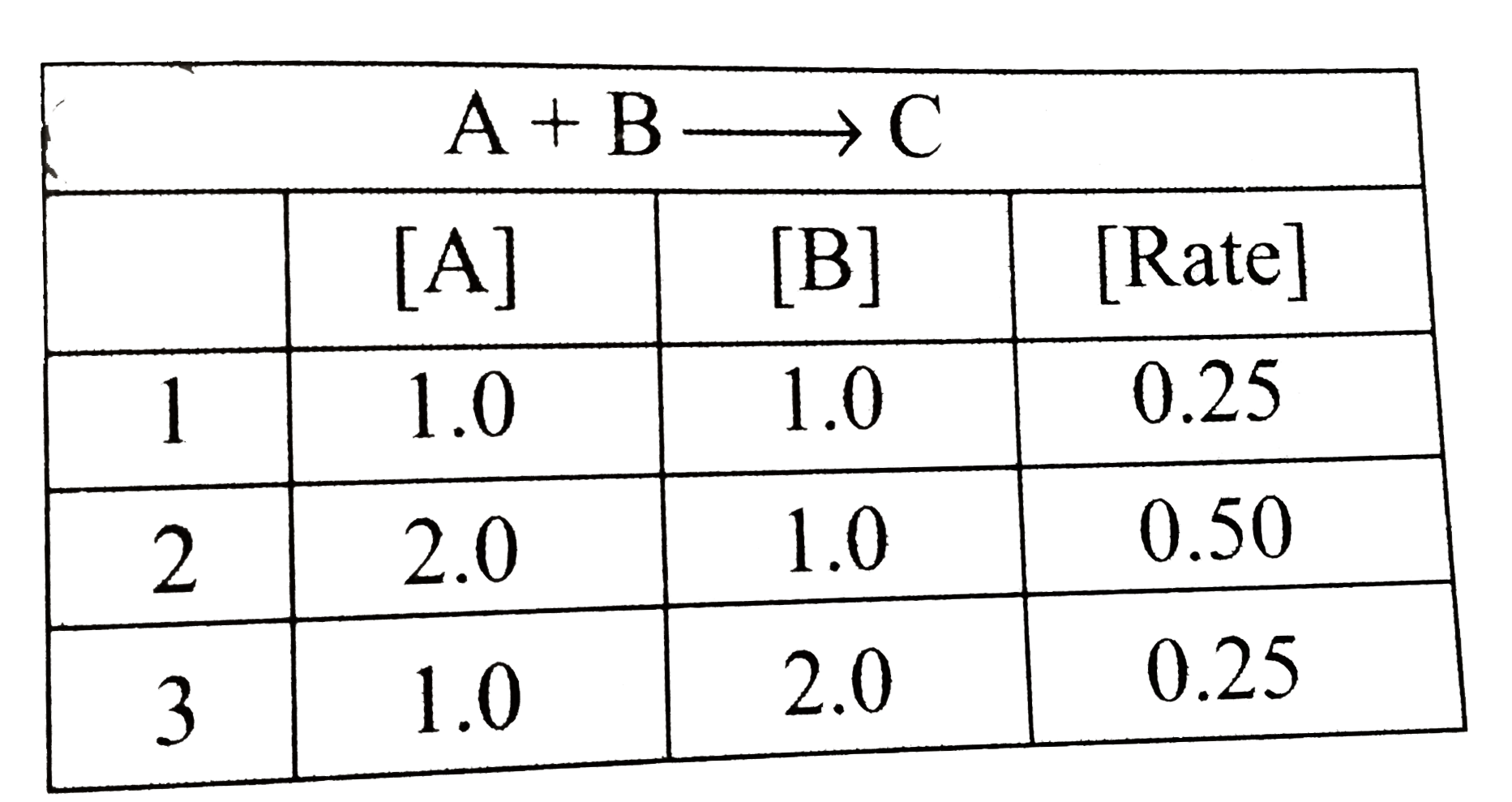
Rate is expressed in .
In the above reaction, the order is
Zero in and one in
One in and zero in
One in both and
Zero in both and
The correct Answer is:B
In experiments (1) and (3), is constant and becomes double, but rate does not change, so order w.r.t .
In experimetn (1) and (2), is constant and is double and the rate also is doubled. So order w.r.t .
Topper's Solved these Questions
- CHEMICAL KINETICSBOOK - CENGAGE CHEMISTRY ENGLISHCHAPTER - CHEMICAL KINETICSEXERCISE - Exercises Assertion-Reasoning
22 Videos
- CHEMICAL KINETICSBOOK - CENGAGE CHEMISTRY ENGLISHCHAPTER - CHEMICAL KINETICSEXERCISE - Exercises Integer
15 Videos
- CHEMICAL KINETICSBOOK - CENGAGE CHEMISTRY ENGLISHCHAPTER - CHEMICAL KINETICSEXERCISE - Exercises Multiple Correct
33 Videos
- CARBOXYLIC ACIDS AND THEIR DERIVATIVESBOOK - CENGAGE CHEMISTRY ENGLISHCHAPTER - CARBOXYLIC ACIDS AND THEIR DERIVATIVESEXERCISE - Exercises Archives (Analytical And Descriptive)
34 Videos
- COORDINATION COMPOUNDSBOOK - CENGAGE CHEMISTRY ENGLISHCHAPTER - COORDINATION COMPOUNDSEXERCISE - Archives Subjective
18 Videos
Similar Questions
In a catalytic conversion of N2 to NH3 by Haber's process, the rate of reaction was expressed as change in the concentration of ammonia per time is 40×10−3molL−1s−1. If there are no side reaction, the rate of the reaction as expressed in terms of hydrogen is (in mol L−1s−1)
View SolutionIf concentration is expressed in mol L−1 units and time in seconds, what would be the units of k
for a first order reaction.
View Solution
Knowledge Check
Calculate the half life of the reaction A→B, when the initial concentration of A is 0.01molL−1 and initial rate is 0.00352molL−1min−1. The reaction is of the first order
A19.69 minB1.969 minC7.75 minD77.5 min
If concentration is expressed in mol L−1 units and time in seconds, what would be the units of k
for a first order reaction.
View SolutionIf concentration is expressed in mol L−1 units and time in seconds, what would be the units of k
for a first order reaction.
View SolutionIf concentration is expressed in mol L−1 units and time in seconds, what would be the units of k
for a zero order reaction
View SolutionIf concentration is expressed in mol L−1 units and time in seconds, what would be the units of k
for a zero order reaction
View SolutionIf concentration is expressed in mol L−1 units and time in seconds, what would be the units of k
for a zero order reaction
View SolutionThe rate for a first order reaction is 0.6932×10−2molL−1min−1 and the initial concentration of the reactants is 1M, T1/2 is equal to
View SolutionThe rate for a first order reaction is 0.6932×10−2molL−1min−1 and the initial concentration of the reactants is 1M, T1/2 is equal to
View Solution
